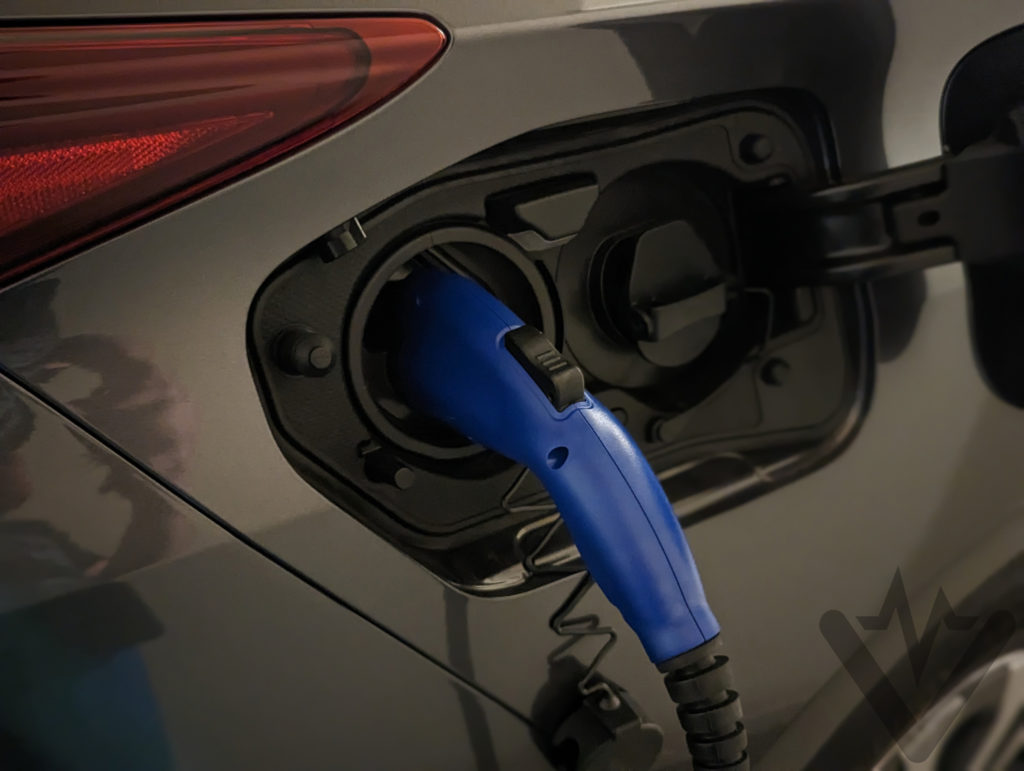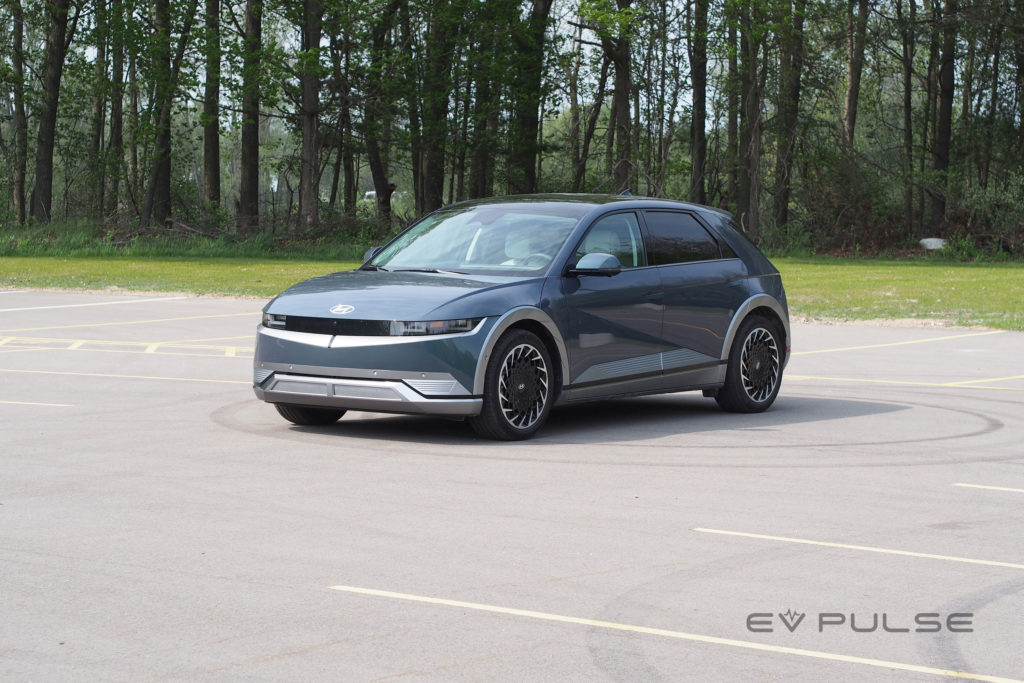Kilowatt vs. kilowatt-hour, despite their similar names, these two terms are completely different. Kind of like the countries of Slovakia and Slovenia. Nope, they’re not the same. I just Czeched.
When shopping for an electric vehicle, you’ve undoubtedly heard of kilowatt and kilowatt-hour, the former of which is abbreviated kW and the latter kWh. But what’s the difference? Well, here’s the simple answer: kilowatt expresses a rate of energy and kilowatt-hour represents the storage of energy. The number of kilowatts is how fast an EV can absorb or put out energy, while kilowatt-hours is how much of that energy a vehicle can hold.

First – and most importantly – the kilowatt is used to express the rate at which EVs charge. When DC fast charging, the Ford F-150 Lighting, for instance, tops out at about 150 kilowatts. That’s the quickest rate this truck can absorb energy. In comparison, the Nissan Leaf hatchback tops out at just 100 kilowatts, which is appreciably slower. In this context, think of kilowatts as a garden hose. The larger the diameter, the more water can flow through at a given time.
SEE ALSO: What is range anxiety and how do you deal with it? EV Basics No. 2
When topping up your EV at a public charger, you’ll see kilowatt ratings prominently displayed. This helps you select the best charger for your EV while leaving more or less powerful chargers for other drivers. There’s no sense plugging your Nissan Leaf in to a 350-kilowatt unit if it can only take in 100. Save that charger for a Hummer EV Pickup or Porsche Taycan, vehicles that charge much faster.
Second, kilowatts are also used to express output. While U.S. vehicles are still rated in horsepower, the geekier among you may want to know that 1 kilowatt is equal to about 1.34 horsepower. Conversely, one horsepower is about 0.75 kilowatts. A rear-wheel-drive Hyundai Ioniq 5 has a single electric motor that delivers 125 kilowatts of oomph. Multiply that by 1.34 and you get the vehicle’s horsepower output, which is 168.

So, kilowatts relate to charging and motor output. But getting back to kilowatt-hours, as mentioned, that term is used to describe energy storage, specifically, the capacity of a vehicle’s battery pack. Really, this is no different than the size of a gas tank in a conventional car or truck. If kilowatt is the diameter of the hose, then kilowatt-hour is the volume of the bucket.
The Ioniq 5 mentioned earlier has a 58-kilowatt-hour battery pack while the F-150 Lightning’s measures 131. The Ford has a much bigger “bucket” than the Hyundai, so it can store a lot more energy.
But where does this confusing “hour” stuff come in? Well, again, this is for the more curious among you. 131 kilowatt-hours means the Lightning’s battery can deliver 1 kilowatt of power for 131 hours or 131 kilowatts for 1 hour. Generally speaking, the larger the battery pack, the more miles of range an EV is likely to have, but that is not a guarantee. Some vehicles have better aerodynamics, others might run more efficient electric motors, but all that is a topic for another EV Basics story.
You’ll also see kilowatt-hours combined with miles to measure how efficient an EV is. Instead of “miles per gallon” in a conventional car, electric vehicles are rated in kilowatt-hours per mile or per 100 miles. The EPA rates the standard-range Ioniq 5 at 31 kilowatt-hours per 100 miles. The Lightning extended range is rated 48 kilowatt-hours per 100 miles. Unlike MPG, lower numbers are better, and as you’d expect for a big, heavy truck with a big, heavy battery, it’s not nearly as efficient as that low-riding Hyundai crossover. It takes many more kilowatt-hours for the Lightning to go the same distance as the Ioniq 5.

So, just to recap, kilowatts and kilowatt-hours are very different but related measurements. One is a unit of power and the other is a unit of energy. Keeping things simple, just think of garden hoses for kilowatts and buckets for kilowatt-hours.
READ THIS NEXT: What is the 80% ‘rule’? EV Basics No. 3
Nleext, let’s put what we’ve learned about kilowatts and kilowatt-hours to practical use by exploring three popular EV models: the Polestar 2 Single Motor, Kia EV6 standard range and Chevy Bolt EUV. At 75 kWh of usable capacity, 58 and 65, respectively, the Polestar looks like it can hold the most energy, and thus, go the farthest. And in fact, it can at 270 miles of range verses 232 and 247 for those competing EVs. But how easy will it be to refill that big battery in the Polestar or either of those other vehicles? The Polestar 2’s peak charging rate is 155 kW, the EV6 standard range tops out at 180 and the best the Bolt EUV can do is a paltry 55 kW. Now that we know the difference between kilowatts and kilowatt-hours, you can make a pretty good guess that the lower kilowatt ratings on the Polestar and Bolt will leave you waiting a lot longer than the EV6 while DC Fast Charging. Nifty, eh? Or maybe not if you drive a Bolt…
So, that’s the difference between kilowatts and kilowatt-hours. After reading this article (or watching the video embedded above), hopefully you have a grasp of what these terms mean and how they differ, so if you’re shopping for an EV you know what to look for.
